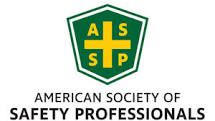OSHA’S 18001 vs. ISO 45001 | FIRST, VERIFY
In a bid to control and prevent onsite work incidents, organizations within the USA can receive certification for occupational health and safety management. Two well-known standards are ISO 45001 and OHSAS 18001.
Disregarding the difference between these two accreditations - along with the significance that one has with the other - can potentially have a negative impact on your organization. If your organization has the OHSAS 18001 accreditation, then you have until 30th September 2021 to make the OHSAS 18001 to ISO 45001 transition. Businesses that have not made the ISO 45001 change by that date will find themselves without an accredited occupational health and safety management system and the benefits that come with it.
But before that, it is important to understand these two accreditations better:
What is ISO 45001?
ISO 45001 is the new ISO standard for occupational health and safety. It is set to dramatically improve levels of workplace safety and productivity. With an emphasis on commitment of management, worker involvement, and mitigating risk, ISO 45001 aims to prevent work-related injuries, illnesses, and fatalities by specifying requirements for an occupational health and safety management system.
This new standard which is set to replace OHSAS 18001, follows the approach of other popular management systems such as ISO 90001. While ISO 45001 is similar in certain aspects of OHSAS 18001, it is a new and distinct standard, not a revision or update, and is due to be phased out to organizations gradually over the next three years.
What is OHSAS 18001?
OHSAS 18001 focuses on controlling hazards and helps create a framework for the effective management of occupational health and safety including all aspects of risk management and legal compliance.
What are the crucial differences between OHSAS 18001 and ISO 45001?
The key difference between the two is that ISO 45001 takes a more preventive, proactive approach that helps evaluate and fix risks before they cause accidents and injuries, while OHSAS 18001 takes a reactive approach that focuses solely on risks and not solutions.
The standards are also very different in many ways:
Intent& Performance: ISO 45001is mainly focused on the intent or objectives as drivers for improvements and performance evaluation. These drivers can be points like worker participation, corporate communication, and procurement.
Structure: ISO 45001’s structure is based on Annex SL, which is the framework for other ISO management system standards—making implementation easier and more efficient. It is more dynamic and it also provides the much-required confidence in safety management for efficient productivity and improved working conditions for all the workers.
Top Leaderships Commitment: ISO 45001 requires a stronger emphasis on top management to actively incorporate health and safety into the overall management system of the organization. The shift is towards the management owning this initiative.
Risk & Opportunity Management: With ISO 45001, companies determine, consider, and take action to address both risks and opportunities that may disrupt production. Although ISO 45001 considers both, OHSAS 18001 deals exclusively with hazards.
Worker & Third-Party Involvement: ISO 45001 introduces an enhanced focus on the needs and expectations for all workers and interested parties and requires employee training and education to identify risks. OHSAS 18001 does not allow for broader employee participation.
These differences represent a significant shift in the way health and safety are managed.
With the upgrade from OHSAS 18001 to ISO 45001, the global industry has witnessed a significant shift in the way any organization perceived health and safety management and other issues related to it. And now, occupational hazard and safety are not a standalone issue for the organization; it has become an integral part of the whole operational procedure to maintain a sustainable organization.
You might also like






